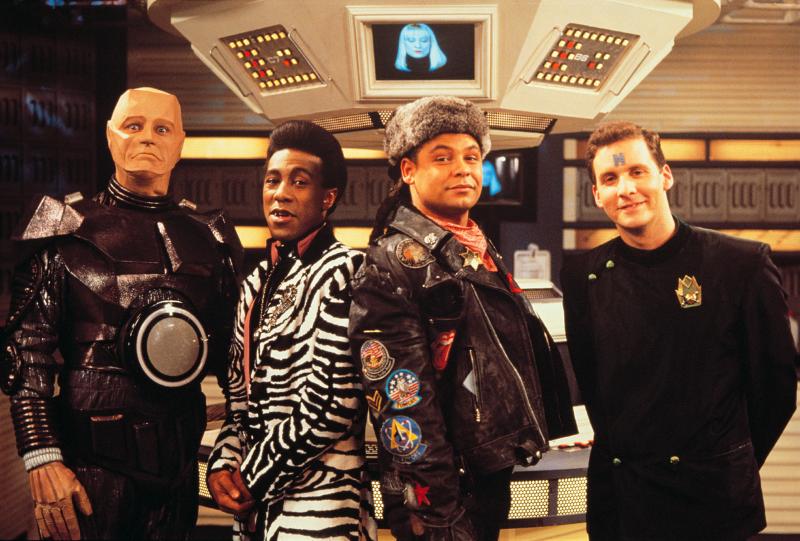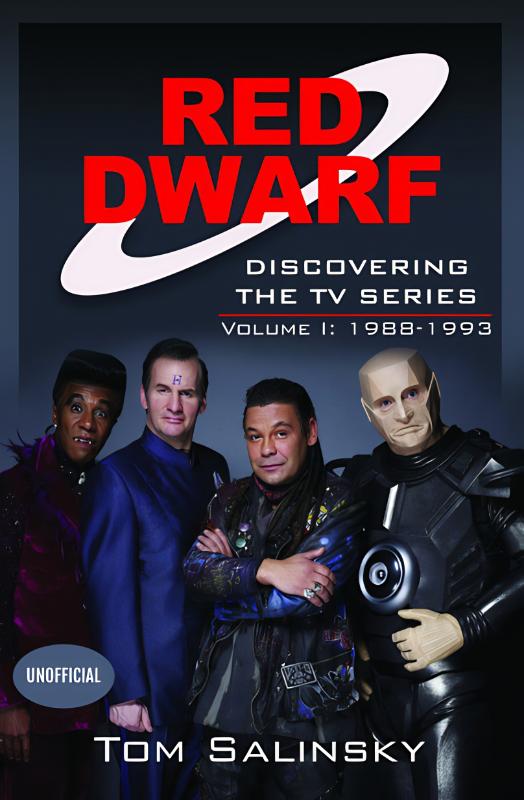Growing up with Red Dwarf by Tom Salinsky

Sitcoms come in all shapes and sizes, but the workplace sitcom and the family sitcom are both hugely popular. British TV has tended to favour the former – Fawlty Towers, Yes Minister, Open All Hours and so on. American TV has tended to favour the latter – Roseanne, The Brady Bunch, Modern Family and many more. And family sitcoms have the curious quality that you can grow up with the characters. Even very long running shows tend not to stay on the air for more than ten years. That isn’t much in the lives of civil servants, shop owners or hoteliers. But if the kid character in your sitcom is in middle school when you start, by the time you finish, you could be looking at college graduation. And if you were a child when the show started, you too could be a teenager or even an adult when it ends.
Sitcoms that stay on the air for decades are rarer. But they do exist. And sometimes you can grow up with the characters even if they don’t start as children. I’m in my early fifties now, and looking at the first episode of Red Dwarf, Lister looks like a child to me. Craig Charles was 23. I was 15.
I loved the show from the start. A devoted watcher of Channel 4 late night variety show Saturday Live, I knew not only Charles but also Chris Barrie (when I’d stopped muddling him up with Harry Enfield) and Norman Lovett. I was also a huge Doctor Who and Blake’s 7 fan, so the combination of space and jokes was irresistible. A second series came along almost immediately. Bliss. I obsessively catalogued every episode, recording them off-air onto E180 VHS tapes and laser-printing covers for the boxes.
Series III came along, and I was at university. My housemates and I rented a TV and a VCR from Radio Rentals and I insisted that we all had to watch the third series together. I don’t like the first episode of Series III (“Backwards”) as much as many people and I felt I’d oversold the show a bit. I needn’t have worried. Episode 2, “Marooned”, is a stone cold classic.
By Series VI, the show was part of the TV furniture. I’d graduated, moved back home, then rented a shared house in Ealing and every year, I got to add another couple of E180s to my collection, and I got to update my catalogue. Between 1993 and 1997, I almost didn’t notice that Red Dwarf had gone away. I was started to write comedy of my own, honing my skills as an improviser, even getting married – even though I was barely older than Craig Charles was when he started making the show.
When it came back in 1997, I was living in a flat in North Kensington, which I hated. This wasn’t what married life was meant to be like. Red Dwarf came back, but it wasn’t the same. Co-writer Rob Grant had left. Chris Barrie had left. It felt slick and modern, too much about the effects and not enough about the jokes. Did I even watch the 1999 series at the time? I don’t remember.
When it came back in 2009, everything had changed. TV channels had proliferated, and the new Red Dwarf was on Dave. Shot on digital cameras, it looked amazing, but again the high concept and the production values seemed to overwhelm the characters and the jokes. Oh well. A noble failure.
But yet again, Red Dwarf was down but not out. Another reboot in 2012 saw the cast back in front of a live studio audience, doing six half hour episodes, just like in the old days. And they were funny. Properly funny. By now I was running my own business, writing plays to take to the Edinburgh Fringe, about to buy my own flat. But as grown up as all that felt, watching Lister, Kryten, Cat and Rimmer cavorting around like young men made me feel like a teenager again. A bit like the kids in The Simpsons or South Park who were supposedly born in the 1980s but who now take iPads to school and experiment with getting ChatGPT to do their homework, they still seemed like grownups to me, but wonderfully lawless, chaotic, childish grownups.
The opportunity to write a book about the series came up. Ah, more obsessive cataloguing. I pored over the old shows and the more recent ones, noting all of the continuity errors, in-jokes, production goofs and surprisingly good special effects. The book is out now, wherever books are sold – thanks for asking.
Later episodes on Dave played the nostalgia card even more strongly. The end of the last episode of the first Dave series (“The Beginning”) mirrors the end of the very first episode (“The End”) and an audacious episode from the next series (“Skipper”) has Rimmer visiting multiple parallel universes including guest appearances from Series I stars Mac McDonald and Norman Lovett. The groundbreaking punk science fiction comedy series now feels comforting, familiar and reassuring. And as I sit watching it on newfangled iPlayer, in my fifties and in my slippers, that’s absolutely smegging perfect.

Tom Salinksy’s “Red Dwarf: Discovering the TV Series” is available for pre-order now from Amazon, released 30th September 2024.





